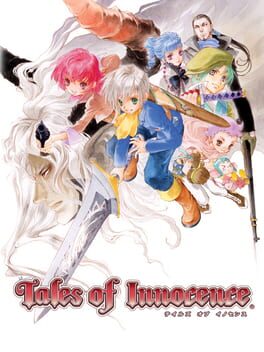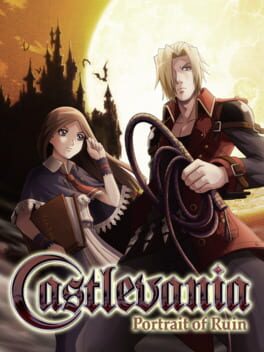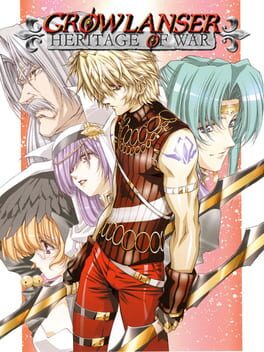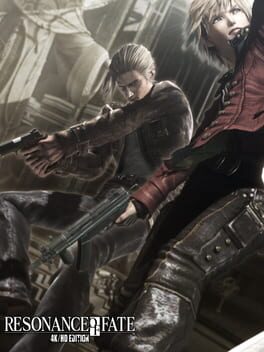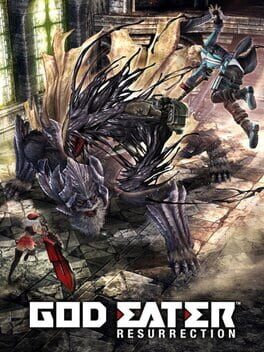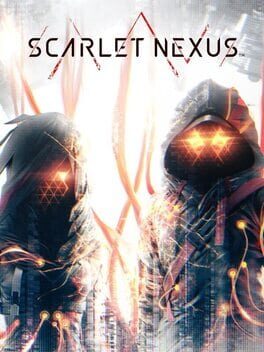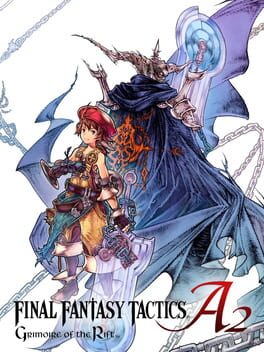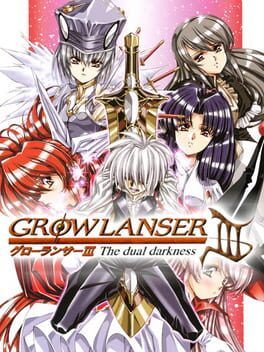Esneiru
2007
This is probably around my 3rd or 4th favorite tales, which probably sounds crazy considering I've played almost all of them, even the untranslated ones.
I wouldn't be able to say Innocence is my favorite in terms of gameplay- not as a finished package at least. However, the one thing Innocence wins over literally any other game in the franchise? It feels fucking good to control. It's fast, it's snappy, no dumb turn speed and no need to rely on semi-manual toggle or doing a goddamn C analog maneouver to pivot.
In terms of the overall plot ts alright. Hits that tales standard, but not much higher than that. What it does win in however, is world building. In totality, this is probably the most fleshed out tales game so far. Every area has a culture, an economy, relationship between countries, faiths, etc. It just feels very lived in for such a small game.
In terms of the overall cast, this is where I'd probably put it above the tales average. The dynamic among the party is unreasonably good, and there are no combination of two characters that can't play off of or interact with each other. For that reason, Innocence includes skits for every combination of 2 and 3 characters, which is absolutely bonkers.
I wouldn't be able to say Innocence is my favorite in terms of gameplay- not as a finished package at least. However, the one thing Innocence wins over literally any other game in the franchise? It feels fucking good to control. It's fast, it's snappy, no dumb turn speed and no need to rely on semi-manual toggle or doing a goddamn C analog maneouver to pivot.
In terms of the overall plot ts alright. Hits that tales standard, but not much higher than that. What it does win in however, is world building. In totality, this is probably the most fleshed out tales game so far. Every area has a culture, an economy, relationship between countries, faiths, etc. It just feels very lived in for such a small game.
In terms of the overall cast, this is where I'd probably put it above the tales average. The dynamic among the party is unreasonably good, and there are no combination of two characters that can't play off of or interact with each other. For that reason, Innocence includes skits for every combination of 2 and 3 characters, which is absolutely bonkers.
This is my absolute favorite castlevania game, bar none. Its hard to describe, because what they essentially did was just take a "solid" igavania as a base, and then just added a bunch of stuff from there. Its funny because the additions and changes all feel so unintegrated and kinda all over the place. But I can't complain at all since I like all of them.
I loved the inclusion of Wind's quests, lots of people thought it made the game too "jrpg-like" but I personally felt like it made the world more lived in. There was a little more to push the player to find all the secrets you always find in igavanias, while also giving more background to the backstory of the game. At the same time, this is also probably why I like most of the secrets and niche interactions of PoR, way more than all the previous games. In a weird way, the smaller map somehow makes them feel a little more memorable. Gaps between every niche interaction/mini-event feels pretty short compared to previous games. Also, I dont care how much everyone else whines, Sanctuary was the peak of the whole series.
It goes pretty hard against the aesthetic and concept of Castlevania, but I loved the talk function and the dynamic between Jonathan and Charlotte. PoR feels decidedly so un-lonely. Between that and the anime artstyle, I get why lots of people aren't a big fan or this installment, but I like it a lot. I wouldn't want the whole series to be like this, but I do want them in general to be a little more personalized.
Too little too late I know, but I would have loved if the game's aesthetics were split between Portrait of Ruin and Rondo of Blood.
I loved the inclusion of Wind's quests, lots of people thought it made the game too "jrpg-like" but I personally felt like it made the world more lived in. There was a little more to push the player to find all the secrets you always find in igavanias, while also giving more background to the backstory of the game. At the same time, this is also probably why I like most of the secrets and niche interactions of PoR, way more than all the previous games. In a weird way, the smaller map somehow makes them feel a little more memorable. Gaps between every niche interaction/mini-event feels pretty short compared to previous games. Also, I dont care how much everyone else whines, Sanctuary was the peak of the whole series.
It goes pretty hard against the aesthetic and concept of Castlevania, but I loved the talk function and the dynamic between Jonathan and Charlotte. PoR feels decidedly so un-lonely. Between that and the anime artstyle, I get why lots of people aren't a big fan or this installment, but I like it a lot. I wouldn't want the whole series to be like this, but I do want them in general to be a little more personalized.
Too little too late I know, but I would have loved if the game's aesthetics were split between Portrait of Ruin and Rondo of Blood.
This game was a turning point for the series in terms of time limits. This was the first point where the time limit was so lenient that it actually got in the way. You end every period with so much time on your hand that you're just not really doing anything for at least a month after every assignment.
In terms of progression, there's this really weird inexplicable gap between mid game and end game where getting any increase to your multipliers is excruciating. I don't understand why the fused traits suddenly end at this weird point in mid-late game and you just have to replace them with the super special traits.
Probably a part people normally don't really think about, but I found it really unfortunate that setpieces in the dungeons just disappear at a certain point. The first ~25% of dungeons were quite nice to look at, but the rest seemed like they were cobbled together in a rush.
The one really good thing I can say about the game is that the two protagonists are really charming. Probably among my favorite atelier MCs, falling only behind Vayne and Ryza. However, the game suffers from a pretty bad case of "the middle of the trilogy" syndrome. There's way too many referencing of Ayesha and way too many plot points are introduced in preparation for Shallie. It would have been nice if the game felt more like a standalone.
In terms of progression, there's this really weird inexplicable gap between mid game and end game where getting any increase to your multipliers is excruciating. I don't understand why the fused traits suddenly end at this weird point in mid-late game and you just have to replace them with the super special traits.
Probably a part people normally don't really think about, but I found it really unfortunate that setpieces in the dungeons just disappear at a certain point. The first ~25% of dungeons were quite nice to look at, but the rest seemed like they were cobbled together in a rush.
The one really good thing I can say about the game is that the two protagonists are really charming. Probably among my favorite atelier MCs, falling only behind Vayne and Ryza. However, the game suffers from a pretty bad case of "the middle of the trilogy" syndrome. There's way too many referencing of Ayesha and way too many plot points are introduced in preparation for Shallie. It would have been nice if the game felt more like a standalone.
This was an incredibly ill conceived game. It makes perfect sense how this came out moments before Career Soft went bankrupt.
Honestly I wouldn't even know where to start. Just from playing, it becomes clear how many of the game's concepts were aborted (the multiple protagonists prologue and how the character designs make no fucking sense when it's been consistent in every growlanser game prior to 5).
I wouldn't be able to recommend this game to anyone. If you're really desperate for a 3D growlanser game, go play 6 instead. At worst that game is just a below average growlanser game and not a complete clusterfuck of mistakes like this one.
Honestly I wouldn't even know where to start. Just from playing, it becomes clear how many of the game's concepts were aborted (the multiple protagonists prologue and how the character designs make no fucking sense when it's been consistent in every growlanser game prior to 5).
I wouldn't be able to recommend this game to anyone. If you're really desperate for a 3D growlanser game, go play 6 instead. At worst that game is just a below average growlanser game and not a complete clusterfuck of mistakes like this one.
This is undoubtedly Tri-Ace's ultimate game. Spanning several generations of the studio's dreams and ambitions, it combines all the kurosawa cinematography, indirect storytelling and light-hearted doomsday tone that the studio loves so much.
This is undoubtedly, the most a game could ever score for me from non-gameplay aspects. If I was to rate the game off of that it'd be 11/10. But as a game?
It's good... when it works. Target switching is an exercise in pain, and the game slowly chokes out the player's freedom in how to approach battles the further it goes. Past a certain point, every fight starts to feel scripted and you get severely punished for trying to improvise. If I were to give tri-ace too much credit, I'd say that's some kind of gameplay allegory on the "oppressive nature of destiny" theme of the game. However, it's more likely that being extremely strict is just their idea of how a game is made challenging.
This is undoubtedly, the most a game could ever score for me from non-gameplay aspects. If I was to rate the game off of that it'd be 11/10. But as a game?
It's good... when it works. Target switching is an exercise in pain, and the game slowly chokes out the player's freedom in how to approach battles the further it goes. Past a certain point, every fight starts to feel scripted and you get severely punished for trying to improvise. If I were to give tri-ace too much credit, I'd say that's some kind of gameplay allegory on the "oppressive nature of destiny" theme of the game. However, it's more likely that being extremely strict is just their idea of how a game is made challenging.
Decided to go back to this game after all this time. Coming back after GE3 made a lot of things feel sluggish, switching modes felt jank and melee without burst/blood arts leaves a lot to be desired.
The biggest reason to play this game is probably if you wanna know the starting point of the circular flow tempo that's present in all the project aragami games (which includes Code Vein). But being the first one means this is also the least polished. You'll find your arm being twisted primarily to guns for breaking parts.
The biggest reason to play this game is probably if you wanna know the starting point of the circular flow tempo that's present in all the project aragami games (which includes Code Vein). But being the first one means this is also the least polished. You'll find your arm being twisted primarily to guns for breaking parts.
2021
For the longest time there were a bunch of things i wanted a game to do at the same time. Scarlet Nexus did two things i never thought a game would be able to do, high commitment, slow animations with no cancelling but still being a game that has dense decisionmaking intervals. The combination of SaS and the heavy physics of Scarlet Nexus managed to do just that on top of other things.
Every enemy runs their own gimmick that forces you to pay attention, and refusing to play the opponent's game extends any fight by upwards of 5 times. There's a direct feedback between playing well and playing badly, and it feels very satisfying.
Every enemy runs their own gimmick that forces you to pay attention, and refusing to play the opponent's game extends any fight by upwards of 5 times. There's a direct feedback between playing well and playing badly, and it feels very satisfying.
There's no shortage to the number of people who'd call this their favorite DQ if not their favorite game ever.
A2 does something no other FFT and honestly no other game really does- or even attempts to do. The game tries to personalize the player as the group, and not as any individual character.
The game allows any clan member to be the representative in major longrunning questlines and turf wars. Luso is treated as A main character, not THE main character. The other clan members take part in his quest just as well as he takes part in theirs. Its a subtle theme that gets pushed with every other named party member as well. Its not really something any company would market with and its not really anything anyone looks for in a game, but regardless it makes A2 have a unique flavor that no other game has, nor does any other game try to match.
The game allows any clan member to be the representative in major longrunning questlines and turf wars. Luso is treated as A main character, not THE main character. The other clan members take part in his quest just as well as he takes part in theirs. Its a subtle theme that gets pushed with every other named party member as well. Its not really something any company would market with and its not really anything anyone looks for in a game, but regardless it makes A2 have a unique flavor that no other game has, nor does any other game try to match.
This is surprisingly my favorite growlanser game with a lot of tiny hidden secrets. The only thing I'd dock a score for this game is that it's "too easy". Not because it's hard to clear, but you have to be a little bad at the game to experience 100% of what the game has to offer.
